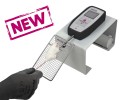Authors
D Zhang, JH Lee, SE Kwak, HE Shin, Y Zhang et al
Lab
Health and Exercise Science Laboratory, Institute of Sports Science, Seoul National University, 1 Gwanak-ro, Gwanak-gu, Seoul 08826, Korea
Journal
Journal of Obesity and Metabolic Syndromes
Abstract
Background Autophagy maintains metabolic homeostasis of muscles, and its impairment may cause muscle dysfunction. Exercise can improve muscle dysfunction induced by long-term high-fat diet. This study aimed to explore the association of autophagy with impaired muscle dysfunction in obese conditions and investigate its relationship with exercise-induced muscle function improvement.
Methods Male C57BL/6 mice (n=24) were randomly assigned to four groups: low-fat diet+plain water feeding sedentary (CON) group, low-fat diet+plain water feeding exercise (CON+EX) group, high-fat high-sucrose (HFHS) diet-fed sedentary group, and HFHS diet-fed exercise (HFHS+EX) group, and subjected to a single bout of exhaustive exercise.
Results HFHS diet resulted in shorter hanging time, reduced grip force, and lower exhaustion time and distance, and decreased lean mass per body weight. Moreover, in the soleus, which is chosen as a representative red (oxidative) muscle, LC3II/LC3I ratio, P62, and Bnip3 levels were altered following the HFHS diet, and were negatively correlated with muscle performance parameters; exercise significantly decreased the LC3II/LC3 ratio while P62 increased with HFHS diet. Autophagy-related protein changes were not found in the white (glycolytic) gastrocnemius.
Conclusion The study revealed that 20-week HFHS diet causes a significant increase in body weight and fat mass, along with a decrease in muscle function. Autophagy-related LC3 and P62 protein expression was negatively correlated with muscle function, and they were reduced when a single bout of exercise stimulated the soleus of obese mice. However, no change of autophagy-related proteins was seen in the gastrocnemius.
BIOSEB Instruments Used:
Grip strength test (BIO-GS3)

 Pain - Thermal Allodynia / Hyperalgesia
Pain - Thermal Allodynia / Hyperalgesia Pain - Spontaneous Pain - Postural Deficit
Pain - Spontaneous Pain - Postural Deficit Pain - Mechanical Allodynia / Hyperalgesia
Pain - Mechanical Allodynia / Hyperalgesia Learning/Memory - Attention - Addiction
Learning/Memory - Attention - Addiction Physiology & Respiratory Research
Physiology & Respiratory Research
 Pain
Pain Central Nervous System (CNS)
Central Nervous System (CNS) Neurodegeneration
Neurodegeneration Sensory system
Sensory system Motor control
Motor control Mood Disorders
Mood Disorders Other disorders
Other disorders Muscular system
Muscular system Joints
Joints Metabolism
Metabolism Cross-disciplinary subjects
Cross-disciplinary subjects Preclinical studies and opioids: role in crisis management in the United States
Preclinical studies and opioids: role in crisis management in the United States 